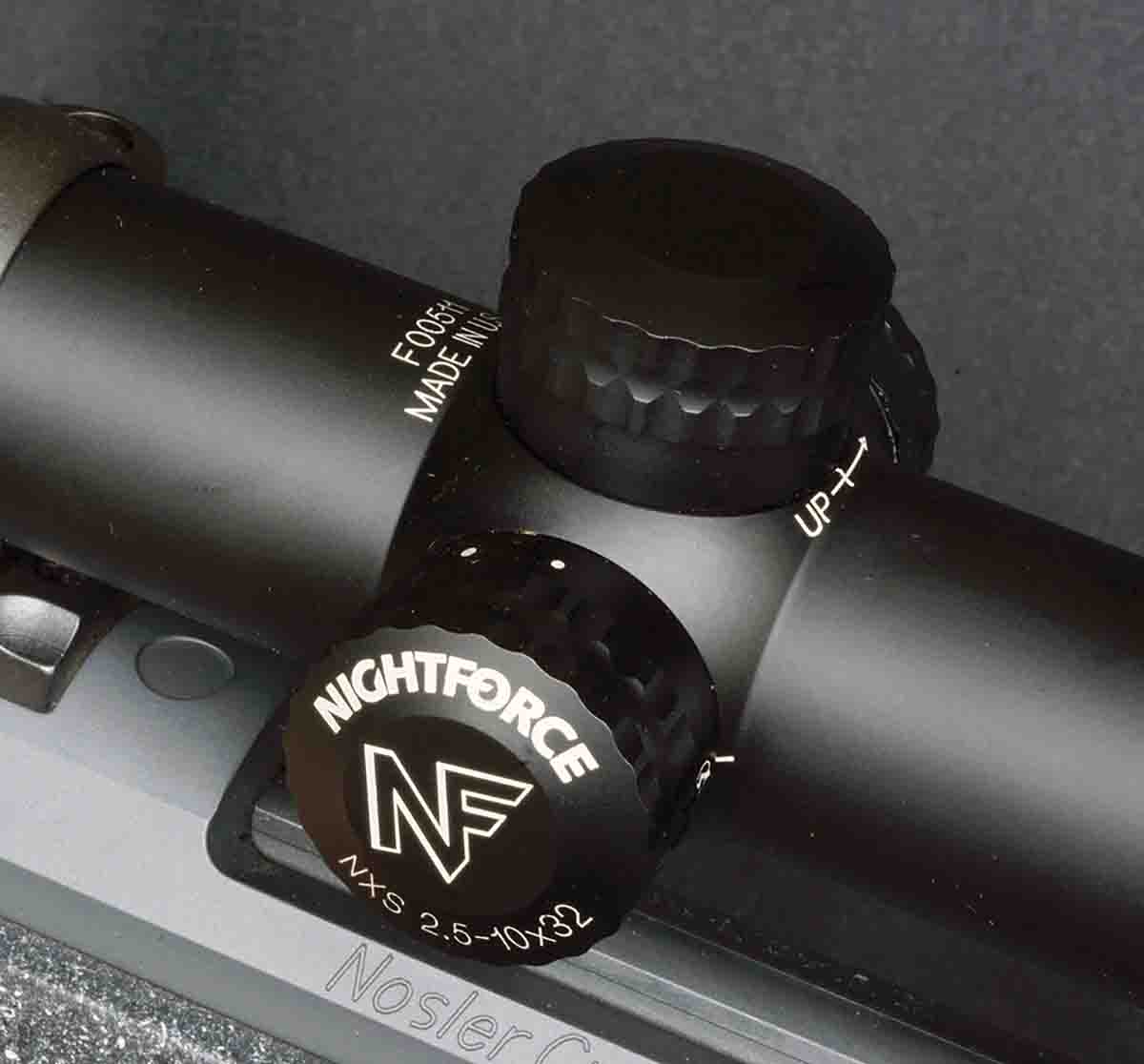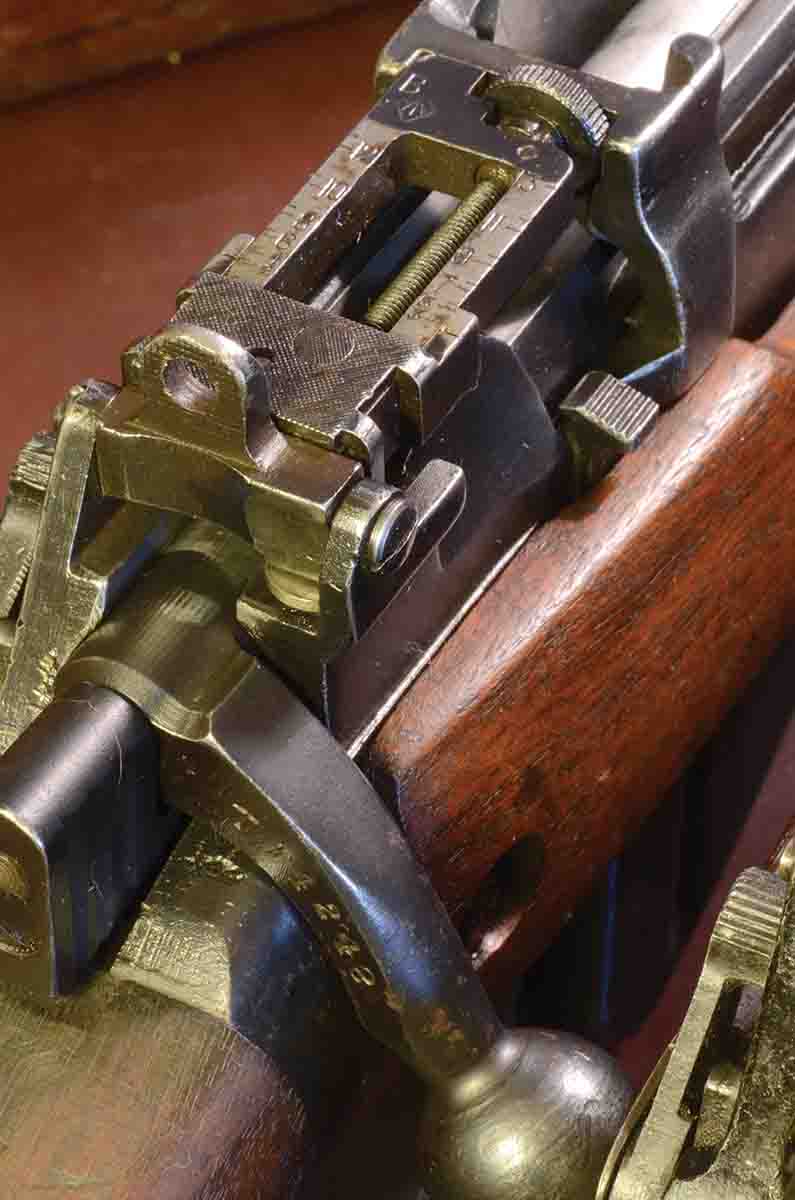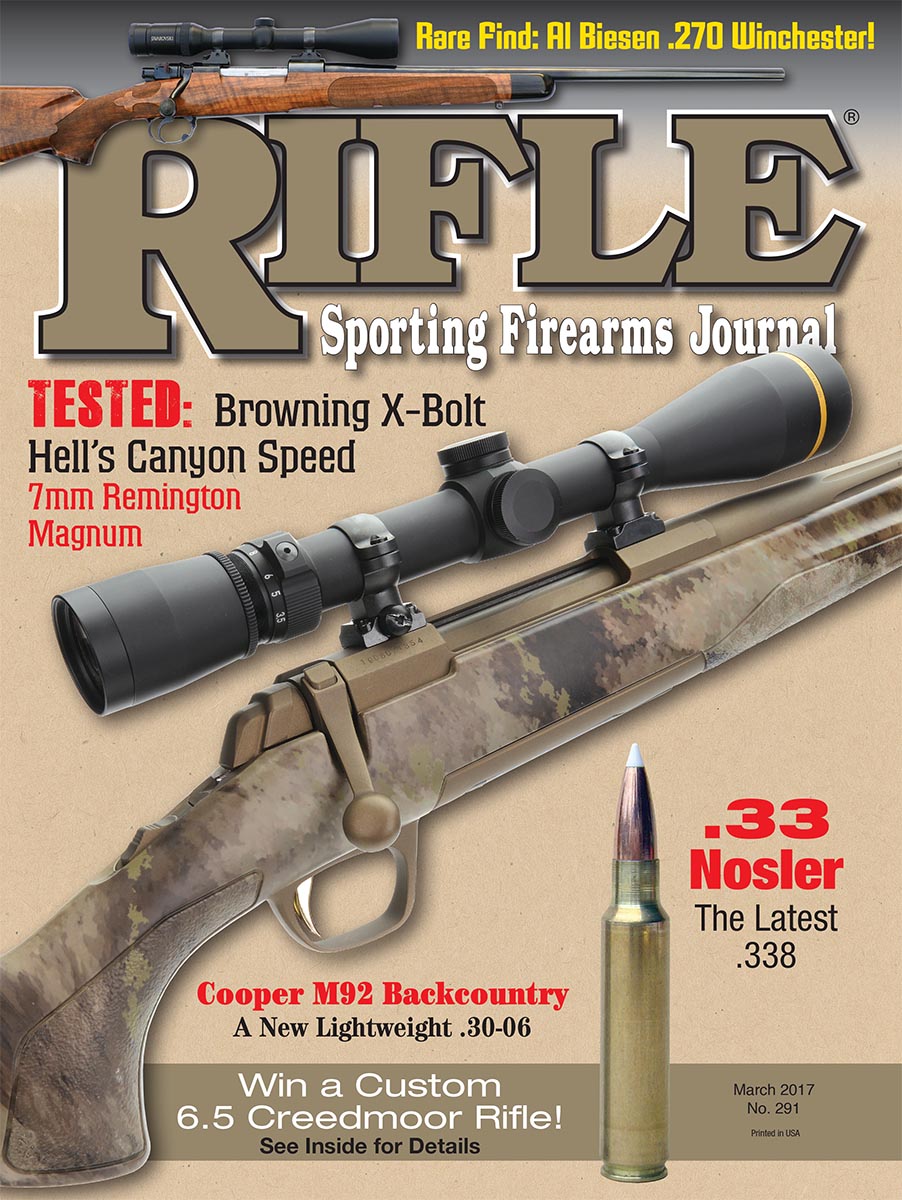Walnut Hill
Sniping as an Evolving Skill
column By: Terry Wieland | March, 17
The first documented use of the term “sniper” to describe a lone rifleman, picking off the enemy at long range with carefully aimed shots, occurred in a dispatch by the young Winston Churchill in 1897 describing military actions in Malakand, near the Khyber Pass. Churchill, a lieutenant in the 4th Queen’s Own Hussars, was on leave from his regiment to cover the war for the Daily Telegraph. In his dispatches, he described the actions of enemy tribesmen who hid themselves on steep hillsides and “sniped” at the columns of British soldiers.
Since then, the term has been widely used, and even applied retroactively as far back as the American Revolution. In British usage, the South African war of 1899-1902 saw the greatest public awareness of sniping, although there is little evidence that the long-range rifle fire of that war would really qualify. It was generally massed rifle fire at long range rather than skilled individuals at work.

In the Great War (1914-18), sniping took on yet a different form. Trenches were sometimes as close as 50 yards apart, and soldiers undertook various means of sniping at the enemy. The best overall description of this is in Herbert W. McBride’s 1935 memoir A Rifleman Went to War. McBride was an American who joined the Canadian army and fought in the trenches with the Canadians from 1915 to 1917. When the U.S. declared war on Germany, he returned to America as a shooting instructor for the U.S. Army.
In the Great War, sniping took place at anything from a few yards (literally!) to 600 yards out. Sniping was informal; individuals who were good shots, and had a knack for it, were allowed to pursue it when the front was quiet. Their activities involved careful concealment and camouflage to prevent detection, obscuring muzzle flash to avoid bringing down machine-gun fire and immediate movement after firing a shot.
Protection against sniper fire on both sides involved trench periscopes and even mirrors a few inches square that fastened onto rifle muzzles. These were held just above the edge of a trench to observe what was happening without exposing so much as an eyebrow. Even so, many such mirrors were shot off within seconds of being hoisted up. This was an elaborate game of cat-and-mouse.
McBride’s sniper rifle was a Ross Mk. III, the Canadian infantry rifle, until it was replaced by the Lee-Enfield in 1916. McBride and other snipers stuck to the Ross throughout the war because of its accuracy.
By World War II, little had really changed. Trenches were not used as much, but all armies spent time in defensive positions in situations in which individual riflemen could employ their skills. The most notable sniper of the second world war, in terms of confirmed kills, was a Finn, Simo Hayha. Fighting against the Russians, Hayha recorded 505 hits on enemy soldiers in a space of about 100 days – an average of five kills a day. The Russians nicknamed him “White Death.”
Finland occupied an unfortunate position in the war. Although now lumped with the Axis powers (Germany, Italy and Japan), Finland was invaded by Russia in 1940, while Stalin and Hitler were still allies under the Molotov-Ribbentrop Pact of 1939. In the Winter War that followed, tiny Finland fought the Red Army to a standstill. The battleground was the Karelian Peninsula north of Leningrad, in thick forest, deep snow and temperatures that dipped to -40 Fahrenheit. Vastly outnumbered but at home in the icy woods, the Finns used innovative tactics, including white camouflage outfits and fighting on skis for mobility and speed.
Since this was 1939-40, Stalin was still seen as an ally of Germany, and the “plucky Finns” elicited great sympathy. Britain, which was at war with Germany, considered the Finns to be their allies, at least tacitly. The British public conducted drives to raise money, mittens and scarves to help the Finns, and the War Office even considered military aid. As it turned out, this was not logistically possible. The following year, when Hitler invaded the Soviet Union, enemies suddenly became allies, allies became enemies, and the Finns found themselves lumped with the Wehr-macht.

Had Finland remained a “friend,” Simo Hayha would be far more famous than he is. Undoubtedly, someone would have made a movie about him. As it was, sympathy for the embattled Finns, innocent victims of Stalin’s blatant aggression, went out the window in June of 1941 when “Uncle Joe” became our pal.
The Karelian Peninsula, being mostly flat and wooded, is unlikely territory for sniping as we now think of it. The activities of Simo Hayha and other Finnish soldiers were more like close-quarter, individual combat. In later interviews, Hayha described the elaborate measures he took to camouflage himself, even to the point of keeping a lump of snow in his mouth so his breath would not steam as he lurked in the snow.
Hayha was armed with the M/28-30, a Finnish variation of the Russian Mosin-Nagant bolt rifle, and was used more or less as-issued. He preferred standard iron sights to a scope for several reasons: He did not have to expose his head as much when aiming, scopes tended to fog up and become unusable, and sunlight reflected off the lens could give away his position. Obviously, stealth and concealment were skills every bit as vital as shooting ability, but Hayha (a native of Karelia and a hunter since childhood) possessed them all.
After 1945, the nature of sniping changed considerably as the capabilities of the available equipment made it possible to hit targets at longer and longer ranges. By the time of the Vietnam war, it was recognized that the standard-issue infantry rifle was not the best for sniping, and the army began acquiring specialized sniper rifles, such as the Winchester Model 70 fitted with a scope.
Today, sniping has evolved into a highly sophisticated military trade. Recently, I attended a two-day seminar on long-range shooting. We used AI rifles fitted with suppressors and Nightforce scopes and received lectures on exact distance measurement, calculating trajectory, allowing for wind and even such esoteric factors as “spin drift” (lateral bullet movement caused by rotation imparted by rifling).
We now tend to think of sniping in terms of equipment – rifles, cartridges, riflescopes, rangefinders, low-drag projectiles and so on. Today’s long-range shooters have riflescopes that are technological marvels and handheld computers that can communicate with satellites, all in aid of hitting a small target at more than a mile.
When you read about individual snipers, however, from the Pushtun tribesmen of the Khyber Pass, to Herbert McBride in the Great War trenches, to Simo Hayha in the deep snow of the Karelian forest, the importance of the equipment fades. It quickly becomes apparent that the most important thing to a sniper is his individual character and ability. Obviously, a successful sniper needs to have skill with his equipment, but more than that, he must have initiative and the psychological strength to operate under extreme pressure and constant personal danger. As soldiers, that’s what makes snipers admirable, no matter which side they’re on.


